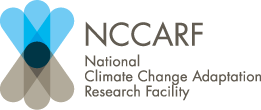You are here
Fake birds and sky cameras help monitor coastal wildlife
A quarter of the world’s seabird species are listed as threatened or of special concern. Accurate monitoring can detect small changes in colony sizes. This allows proactive and adaptive management of species to make them more resilient to climate change.
Researchers have created colonies of model birds to show that unmanned aerial vehicles provide a highly accurate and inexpensive way of monitoring wildlife populations.
Jarrod Hodgson, a PhD student at the University of Adelaide, used social media to set up a test at Port Willunga beach in Adelaide. The Epic Duck Challenge (#epicduckchallenge) involved seven experienced bird spotters with binoculars and telescopes positioned 37 metres away from simulated colonies containing up to 1000 replica seabirds.
‘While the spotters on the beach counted birds, we flew our remotely piloted aircraft above the colony to a height of 120 metres, taking photographs at various resolutions,’ Jarrod Hodgson said.
‘We created ten colonies simulating Greater Crested Terns, using 22-cm long replica birds.’
Greater Crested Terns are commonly found in near-coastal environments and estuaries, but also inhabit lakes and rivers inland. Research has suggested that longer-term changes to weather patterns and atmospheric temperatures from season to season will have a significant impact on seabirds.
The bird spotters did a good job counting the birds. But the remotely piloted aircraft did better.
‘It is very hard to count birds in colonies. It turns out to be more accurate to have people count birds in the aerial photos than to do it on location with binoculars or telescopes,’ Jarrod Hodgson said.
‘The higher the image resolution, the greater the accuracy.’
‘Manually counting birds in images is time consuming. So, we also used computer vision techniques to semi-automate the process. The results were impressive and with investment, it is likely we could make this process even more efficient.’
‘High quality wildlife data have never been more important. Our research is showing that unmanned aerial vehicles can efficiently and accurately monitor large areas. Seabirds are highly suited to this form of monitoring as many species are easily observed from above.’
‘Accurate monitoring can detect small changes in colony sizes. This allows proactive and adaptive management of species. Lower quality data may only allow detection of major declines in population of a species, at which time it may be too late to conserve them.’
How could drones help monitor coastal changes in your region?4re79g1p3dgs5twn.png





